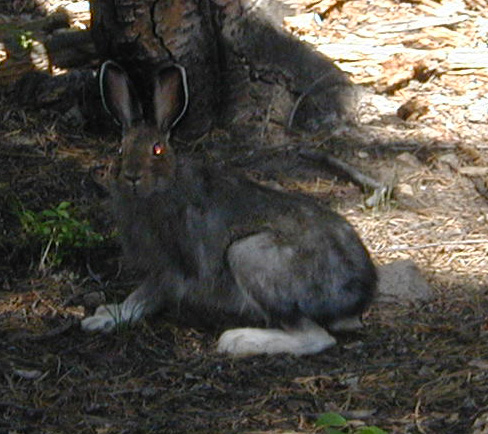Promiscuity
Promiscuity occurs when males and females in a population mate randomly and
with multiple partners. In general, the theory of mating systems suggests that
promiscuity should be rare or absent in animals, as it is usually to the advantage
of one or both of the genders to choose their mates. Promiscuity might occur
in species in which the environment is completely unpredictable--in which it
is impossible to judge which mate might carry genes
that would be good in the next generation. Another factor favoring promiscuity
would be the inability of any animal to hold a territory and monopolize access
to critical resources.
Mere observation of seemingly random matings does not establish that a mating
system is, in fact, promiscuous. Copulation can serve social functions other
than reproduction such as bonding, dominance, or even concealment of actual
paternity of a female's offspring. Genetic studies (usually using DNA fingerprinting
or microsatellite marker techniques) establish true paternity of juveniles.
If the norm for males in a population is to sire offspring with more than one
female, and each of the males is more or less equally succesful in fathering
young, then the mating system is truly promiscuous. If there is substantial
variation among males in their success in siring young, then even if mating
frequencies suggest promiscuity, the system is probably actually polygynous.
The snowshoe hare, Lepus americanus, is best known
for its dramatic population cycles in Canada. Snowshoe hare populations
rise and fall on a ten-year cycle.While once thought to represent a classical
predator-prey cycle, it is now recognized that hare population cycles
are more complex, regulated not only by predators but also by food supply
(Krebs et al. 1995). Snowshoe hares show no sign of being territorial,
or of having any sort of complex social system, even at the peak of their
population cycle.
Going along with this lack of social complexity is a promiscuous mating
system. Behavioral observations suggest that female and male snowshoe
hares mate with many partners, and genetic analyses confirm that in many
litters more than one father is represented. Some males, though, fathered
more offspring by being able to be the only father of some litters. Burton
(2002) interprets these results to indicate that the mating system is
not fully promiscuous, in that paternity is not entirely random. Some
sort of competition may occur among males (perhaps some males are more
attractive to females and gain more matings). The number of fathers represented
in the offspring, and the frequency of litters representing more than
one father does make this mating system as close to true promiscuity as
has been observed in any mammal.
|

This hare was photographed in the Colorado subalpine. It shows its
summer coloration, which blends well with the litter of pine needles
and twigs on the ground. In winter, this animal will be entirely white.
|
Burton C 2002 Microsatellite analysis of multiple paternity and male reproductive
success in the promiscuous snowshoe hare. CANADIAN JOURNAL OF ZOOLOGY-REVUE
CANADIENNE DE ZOOLOGIE 80 (11): 1948-1956
Krebs C J, Boutin S, Boonstra R, Sinclair A R E, Smith J N M, Dale M R T, Martin
K, Turkington R 1995 Impact of food and predation on the snowshoe hare cycle
SCIENCE 269 (5227): 1112-1115
page 11-*
copyright ©2003 Michael D. Breed, all rights reserved
